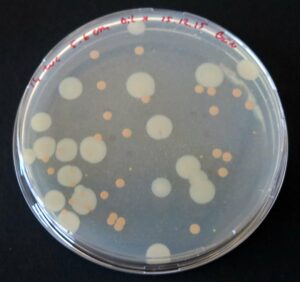Impact of deep sea mining activities on benthic pelagic coupling in the Clarion Clipperton Fracture Zone (CCFZ)
This project is a cooperation of the Microbiology laboratory with scientists from the Ocean Lab at Jacobs University and from the MARUM, the University of Bremen’s prime marine research consortium. The project is guided by Prof. Laurenz Thomsen, Dr. Morten Iversen, Dr. Nicolas Nowald, and Prof. Matthias Ullrich.
Deep sea or sea shelf mining bare great industrial potential and possible high risks perceived by a sensitized public alike. To foresee possible problems, a careful risk assessment needs to be conducted.
In the vicinity of mining operations, the concentration of particulate matter in the water column will at times be enriched as a result of the discharge of waste material. Such “plumes” will interfere with the natural particle flux and result in a modification of the benthic pelagic coupling. Very little is also known about the actual concentrations of biologically available heavy metals and the abundance of bacterial heavy metal resistance at micro-scale in these plume-associated marine aggregates
Sediment sample from the CCFZ will be used to analysis of the role and abundance of microbial heavy metal resistance in deep sea mining-associated plume particles and sediments. Additionally, an array of in vitro experiments using roller tank and water column setups will be conducted. Different cell densities, oxic, suboxic, or anoxic conditions, as well as different heavy metal containing materials will be applied. Sedimentation and aggregate formation will be quantitatively assessed and documented by microscopy, attachment assays, and geochemical analyses. Competition experiments will be conducted during which heavy metal-resistant and -sensitive strains will be co incubated with sediment particles and marine algae under an array of conditions in order to test for success in sedimentation and aggregate formation, respectively. In a second in situ approach, bacterial genes responsible for heavy metal resistance will be screened for by polymerase chain reaction with specific primers in a number of pore water, sediment, or deep sea aggregate samples taken from different mining areas including coastal shelfs and the CCFZ. This cultivation independent approach will be used in order to show the total and specific abundance of heavy metal resistance genes. Nucleotide sequence comparison of the cloned PCR products will reveal the homogeneity or heterogeneity of the used resistance mechanisms. Data from both approaches will be integrated with data from geochemical and sedimentation characteristics analysis.
Figure 1: CCFZ sediment bacterial screening trial


